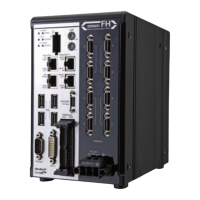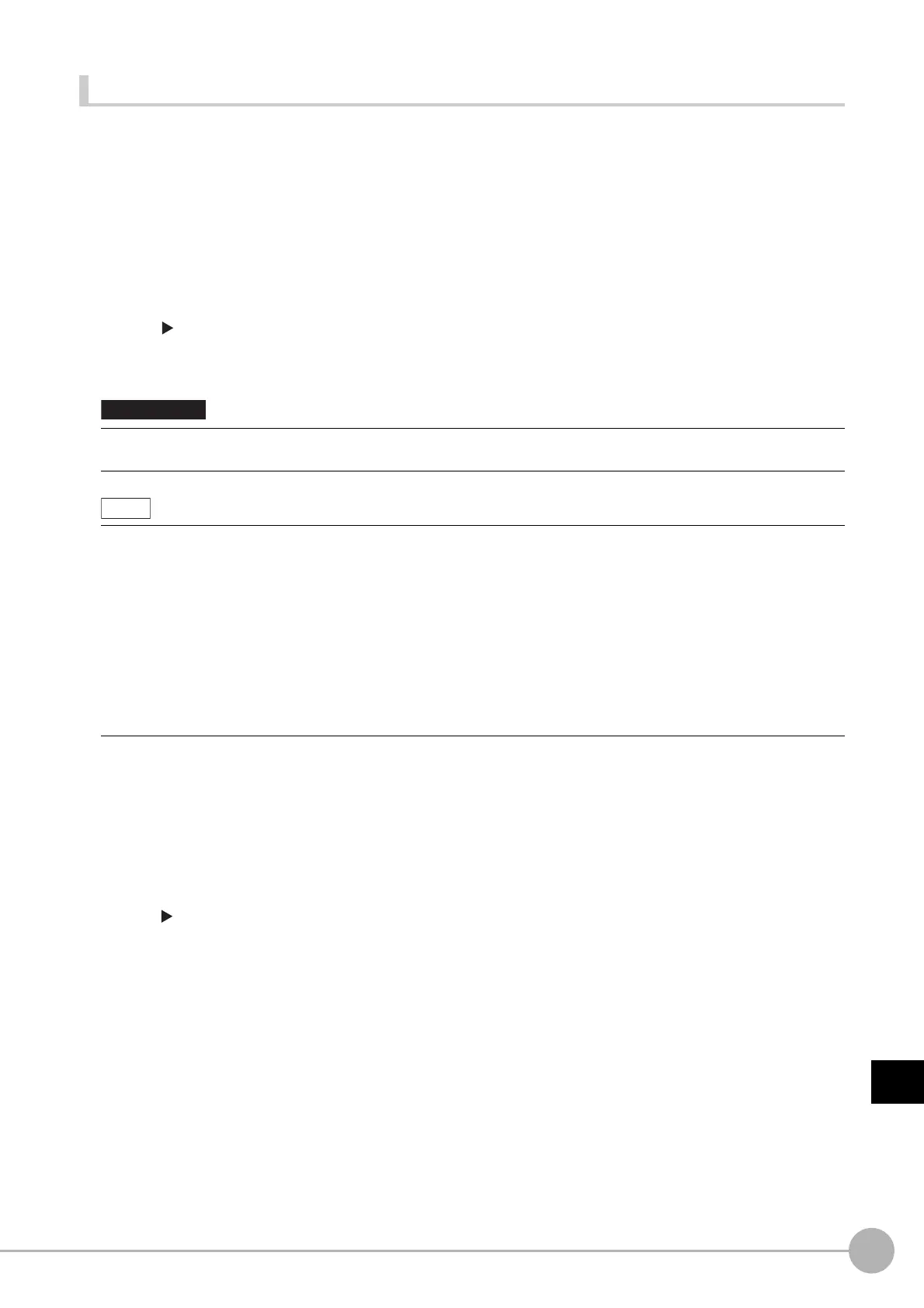WWW.NNC.IR
Alignment
307
8
Appendices
Vision System FH/FZ5 Series
User’s Manual (Z340)
Settings for the Calibration To Execute
Add the following Calibration processing items to the flow.
● Vision Master Calibration
This processing item calculates the axis movement that is necessary to perform the most accurate calibration
within the range of movement of the external device.
This routine is performed repeatedly to create very precise calibration parameters: Output the calculated axis
movement to the PLC, the PLC moves the external device, the PLC sends a measurement command to the
FH/FZ5-series Controller.
Reference the Reference Calib Data processing item to access the calibration parameters that were created.
Refer to Vision Master Calibration of the Vision System FH/FZ5 Series Processing Item Function
Reference Manual (Cat No. Z341).
● PLC Master Calibration
The PLC Master Calibration processing item creates calibration data as follows: The axis movement that is
necessary for sampling is calculated in advance. Then, the following routine is repeated: the PLC moves the
external device, it sets the axis movement in the FH/FZ5-series Controller, and then it sends a measurement
command to the FH/FZ5-series Controller.
Reference the Reference Calib Data item to access the calibration data that was created.
Refer to PLC Master Calibration of the Vision System FH/FZ5 Series Processing Item Function Reference
Manual (Cat No. Z341).
If you are using the measurement results of the Sensor Controller to operate an external device, make sure the
movement is within the range of the movement of the external device before you implement the move.
The Vision Master Calibration processing item has the following advantages over PLC Master Calibration processing
item.
• There is no need for trial and error with the order of movements or axis movement, even with complicated external
devices, such as UVW stages.
The order of movement of the workpiece during calibration and the axis movement of the external device that
corresponds to each movement are automatically calculated.
• Even if you change the calibration conditions, you do not have to change the PLC ladder programming.
If you add more sampling points for better precision, or if you reduce the number of sampling points to shorten the
calibration time, you can still use the ladder programming as is.
• In conjunction with calibration, you can also calculate the parameters for distortion correction at the same time.
This allows you to align positions with even greater accuracy without doing any extra work.

